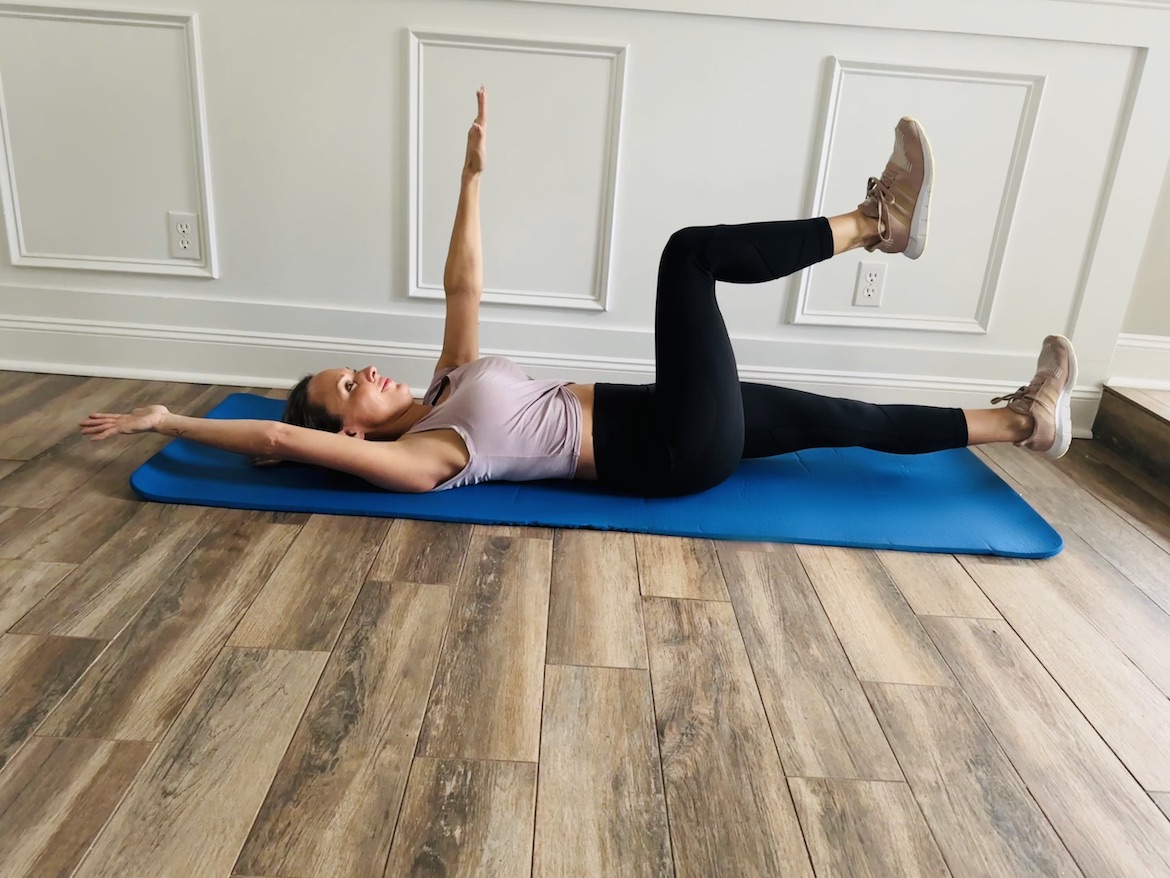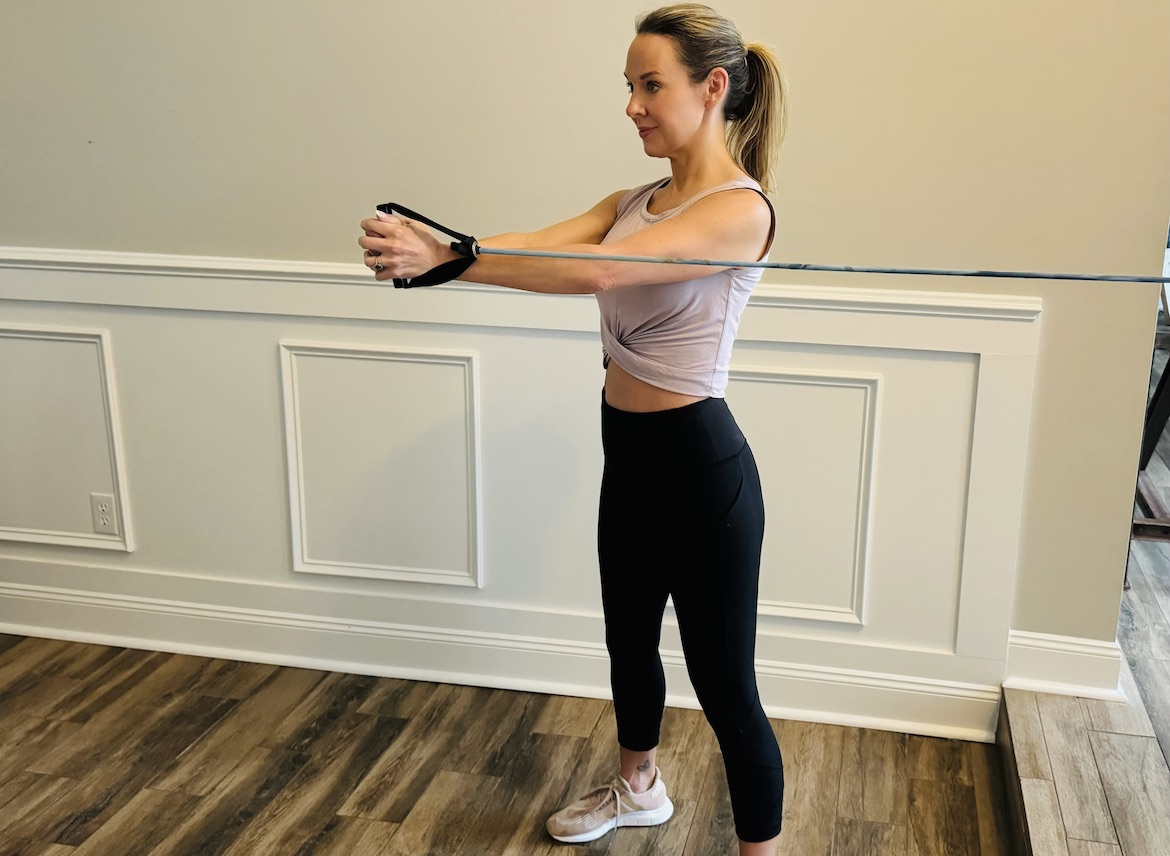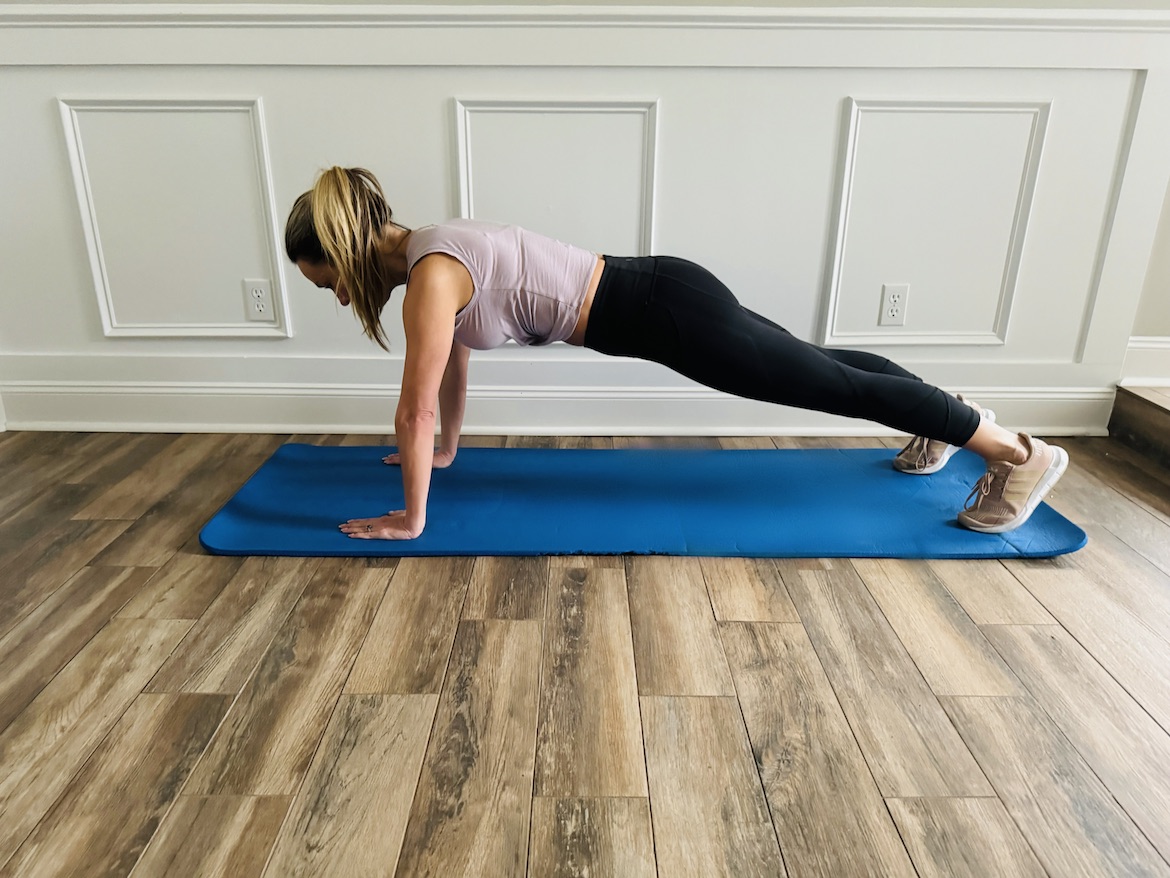Fitness experts often emphasize the significance of having an engaged core during a workout. However, it’s not always clear what that means, and engaging your core correctly is easier said than done. To get to the bottom of it, we spoke to the experts to explain the benefits of a strong core and, most importantly, guidance on how to engage it effectively.
First, let’s clear up one common misconception: Your core isn’t just your abdominals, or abs. Your abs make up part of your core, but there is more to it. The core also consists of the muscles in your pelvis, lower back, and diaphragm.
Your core muscles
“Think of your core as a powerful team of muscles and fascia that hug your entire mid-body, not just your abs in the front,” says Jonathan Jordan, CPT, a San Francisco–based certified personal trainer and nutrition coach.
Experts say you should picture your core as a box, with your abdominals in the front, diaphragm at the top, pelvic and hip muscles on the bottom, and your gluteal and spinal muscles in the back. These muscles help move, support, and stabilize your entire body.
The specific muscles that make up your core include:
- Rectus abdominis (your “six-pack” abdominal muscles)
- Obliques (internal and external)
- Transversus abdominis
- Diaphragm (assists in breathing)
- Pelvic floor
- Erector spinae
- Quadratus lumborum
- Multifidus
- Iliopsoas
- Latissimus dorsi
Signs those muscles are weak
Difficulty engaging your core—or maintaining it for a period of time—is one of the most obvious signs you have a weak core. Your body will give you other clues if you need to focus on core strengthening.
“The biggest issue with a weak core is pain,” says Jordan. “Especially pain in the lower back and hips.” You may also have difficulty with balance, poor posture, or frequent injuries during exercises or sports.
How to engage your core muscles the right way
If you’ve been “sucking in your stomach” when given the prompt to “brace” or “engage your core” from a trainer, you aren’t properly engaging your core muscles. This means not only are you not getting all the benefits of a strong core, but you may also be putting yourself at risk for injury.
“There are so many cues that physical therapists, trainers, and other movement professionals tend to use,” says Jordan. “The one that’s been around the longest is ‘draw your navel into your spine.’ I don’t like that one because it’s confusing. People often think it means to suck in your belly. This leads you to empty all your breath and mistakenly disengage many of the important muscles of your core.”
Jordan says he also doesn’t like the prompt to “brace” your core or “tense and tighten your belly as though someone was going to punch you.”
“I don’t love that one because people tend to go overboard and tighten like they are getting ready for Mike Tyson to sock them.”
“My trick is to have clients gently cough. When we cough or sneeze (a small, quiet one is fine) you instinctively engage your torso or core muscles.”—Jonathan Jordan, CPT
His favorite prompt? “My trick is to have clients gently cough. When we cough or sneeze (a small, quiet one is fine) you instinctively engage your torso or core muscles,” he says. “Practice coughing quietly and softly and feel that tensing, especially in your abs between your ribs and your belly button—but also in the muscles below your belly button, down into your pelvic region and your sides or obliques.”
“Once you engage it and feel it, practice holding onto it while moving, getting up and down, and eventually while lifting and exercising,” Jordan says.
Make sure you aren’t holding your breath while your core is engaged. Practice keeping that tight feeling, while letting your rib cage move in and out as your breath.
How to know if you’re doing it right
Your midsection, from your ribcage down to your pelvis, should feel tight and secure. You can also place your hand on your abdominals and feel if they are tight.
While exercising or doing activities like lifting weights, your body should feel stable and strong. If you feel instability or pain, are off-balance, or have poor posture, then these are signs you aren’t engaging your core. You should stop, rest, and focus on re-engaging your core.
When to engage your core
There are times when you will need to make a conscious effort to engage your core (such as during certain exercises or sports), however, other times simply having a strong core provides enough support.
“What we don’t realize is that our body is constantly sending signals to our brains to contact and release certain muscles to create our day-to-day movements,” says Ash Wilking, CPT, certified personal trainer and Tonal strength coach. “We have muscle in our core, these tiny muscles that work to stabilize each segment of our spine—we refer to them as our deep stabilizers. We don’t think about engaging those muscles, but like everything in our body, we’re one big game of dominos and the kinetic chain relies on one thing working for something else to.”
Essentially, if your body will be bending, twisting, lifting, pushing, or pulling, you should engage your core. If you are exercising or doing sports, you should engage your core.
“The intensity of core engagement increases with the risk or effort related to the movement,” says Jordan. “If you are riding a horse, you need to engage your core far more intensely than if you were just walking down the street about to step off a curb. If you are deadlifting your 1RM [one repetition maximum] off the floor, then you need a much more intense, deliberate, and conscious brace of.”
“As the risk of injury to your spine increases, so does your need to engage your core,” explains Jordan.
What about during strength training?
Engaging your core during strength training will not only allow you to lift more, but also protect you from injury.
“During heavy squats, deadlifts, lunges, and overhead presses, we don’t think about engaging our abs, the same way we would if we were just doing a crunch, ” says Wilking. “But the reality is that we should think about our abs just as much during these main lifts.”
“As the risk of injury to your spine increases, so does your need to engage your core.”—Jonathan Jordan, CPT
Coaches will often refer to this as bracing, creating intra-abdominal pressure, or 360-breathing. It’s a fancy way of saying as you think about “sucking in” to engage your core, you simultaneously press out against your abdominal wall.
6 benefits of engaging your core
“The word core says it all, it’s at the center of all our movements,” says Wilking. “Our core is responsible for creating stability and safe movement in our spine.”
Here are the main benefits of a strong and engaged core.
1. Prevents injuries
Strengthening your core and engaging it during exercise or sports can prevent injuries. A 2013 study1 found that core stability training prevented lower extremity injuries, while a 2015 study3 linked a weak core to a higher risk of shoulder and elbow injuries. Experts say that weak core muscles are more prone to fatigue–which can lead to injuries.
“Proper engagement and use of our core will help improve posture and reduce our risk of injury, during exercising and everyday movements,” says Wilking.
2. Helps relieve back pain
A systematic review2 found that core strengthening exercises, specifically those focused on the deep core muscles, helped relieve chronic low back pain. The deep core muscles include the diaphragm, pelvic floor, transverse abdominis, and multifidus muscle. Core muscles such as the rectus abdominis and glutes are considered more superficial. Strengthening all of the core muscles means they are more easily engaged as you go about your daily activities.
“Our deep stabilizing core muscles are only as strong as the supporting muscle groups,” says Wilking. “In our daily movement we shouldn’t have to think about using our obliques when we reach high and rotate to get our heavy carry-on out of the overhead bin on our weekend trip, but having strong obliques means you can do so without injury.”
3. Improves performance
Core strengthening may improve your exercise and athletic performance, including vertical leap height and squat load, a systematic review4 found. An engaged core during throwing, for example, helps to transfer energy from your legs through your strong and stable trunk and to your arms. During basketball, an engaged core helps with your balance and stability with direction changes.
Researchers noted that more studies are needed, however, to better understand how athletic performance is affected by core stability.
4. Improves balance
Maintaining balance and stability as we age is very important to prevent falls and to maintain an active lifestyle. A study5 found that eight weeks of core strengthening significantly improved the balance of older participants. Being able to engage your core easily means your entire body is stable and secure when doing activities. It’s not just older people that can benefit, as a 2022 study6 found that younger adults also significantly improved their balance with a core strengthening program.
5. Strengthens your pelvic floor
Your pelvic floor makes up part of your core. There are many benefits of a strong pelvic floor, including improvements in urinary incontinence7 or bladder leakage.
6. Helps your body move more efficiently
A strong core is beneficial in every area of your life. “Learning to properly engage your core will help you avoid injury, get stronger, and move more athletically—and not only in the gym or on the field. It also helps while cleaning your house, picking up and carrying your kids, or even while just walking down the street,” says Jordan.
4 exercises to help strengthen your core
“Many only think of ‘core flexion’ (like crunches and sit-ups) as a way to work the abs. Those moves are fine enough and have a place in a solid program, but what I find most people need more is core stability and anti-rotational strengthening,” says Jordan.
1. Dead Bug
“I always warm the core up with a basic dead bug drill,” says Jordan. “The dead bug is the most underrated core exercise that beautifully demonstrates the core’s function of allowing us to move our limbs in sequence and be as functional as possible.”
 Lie on your back with your knees bent and your feet flat on the floor.
Lie on your back with your knees bent and your feet flat on the floor.- Engage your core (see instructions above if you aren’t sure how) as you press your back down into the floor. Your core should be tight and your back should remain in contact with the floor throughout this exercise.
- Lift your knees so they are in a tabletop position and bent at a 90-degree angle.
- Raise your arms straight over your head.
- Slowly tap your right toe to the floor and then return to the starting position.
- Next, tap your left toe to the floor.
- Keep your core engaged and your lower back on the floor the entire time.
- After you master that, it is time to add your arms.
- Straighten your left leg out in front of you (without touching the floor) and reach your opposite arm (in this case your right arm) behind you.
- Repeat the same thing on the opposite side. Straighten your right leg out in front of you while reaching your left arm behind you.
- Repeat 12 to 15 times on each side. Do 2 to 3 sets.
2. Paloff Press
The Paloff press is one of the best core strengthening exercises you can do—and it’s one of Jordan’s favorite moves. This exercise considered anti-rotational strengthening as it works all the muscles that support your spine to resist rotation. It’s also simple, but very effective.

- You can use a cable machine at the gym or a resistance band.
- If using a resistance band, secure it in a door or by tying it to a stable surface. The anchor (either the cable machine or the anchor the band) should be to your left.
- Stand with your feet shoulder-width apart and your knees bent slightly.
- Hold onto the band or cable and start at sternum or chest level.
- Take several steps away until the band or cable is tight. You should feel resistance trying to rotate you toward the band or machine.
- Engage your core and press your arms in front of you until they are almost straight.
- Hold for 1 to 2 seconds and then bring them back into the starting position.
- Repeat 12 to 15 times.
- Turn around and repeat this same sequence with the anchor now on the other side.
- Repeat 12 to 15 times for 1 to 3 sets.
3. Superhero
This one of Wilking’s favorite core-strengthening moves. The superhero exercise targets the posterior or back core muscles, including your lower back (erector spinae), glutes, and your abs. It also strengthens your hamstrings.

- Lie on the floor on your stomach with your arms straight in front and your legs straight behind you.
- Squeezing your glutes and core, lift both your arms and your legs off the ground at the same time (like you are a flying superhero).
- Keep your head in a neutral or straight line. Avoid looking up.
- Try to lift your belly button off the floor as you raise up your arms and legs.
- Hold for 2 to 3 seconds, and then return to the resting position.
- Only go up as far as you can comfortably go.
- Repeat 10 to 12 reps for 2 to 3 sets.
4. Planks
The plank is a fabulous core exercise that strengthens your rectus abdominus, transverse abdominus, internal obliques, and external obliques. There are also several plank variations you can try.

- Start in a push-up position, with hands beneath your shoulders and your legs straight behind you.
- Your body should be in a straight line. Don’t let your hips sag down or raise up.
- Your head should be in a neutral position.
- Hold for 15 to 60 seconds. Repeat 1 to 3 times.
Well+Good articles reference scientific, reliable, recent, robust studies to back up the information we share. You can trust us along your wellness journey.
-
Huxel Bliven KC, Anderson BE. Core Stability Training for Injury Prevention. Sports Health. 2013;5(6):514-522. doi:10.1177/1941738113481200 -
Chang, Wen-Dien, et al. “Core strength training for patients with chronic low back pain.” Journal of Physical Therapy Science, vol. 27, no. 3, 2015, pp. 619–622, https://doi.org/10.1589/jpts.27.619. -
Silfies, Sheri P., et al. “Critical Review of the impact of core stability on upper extremity athletic injury and performance.” Brazilian Journal of Physical Therapy, vol. 19, no. 5, Oct. 2015, pp. 360–368, https://doi.org/10.1590/bjpt-rbf.2014.0108. -
Reed, Casey A et al. “The effects of isolated and integrated ‘core stability’ training on athletic performance measures: a systematic review.” Sports medicine (Auckland, N.Z.) vol. 42,8 (2012): 697-706. doi:10.2165/11633450-000000000-00000 -
Kang, Kwon-Young. “Effects of core muscle stability training on the weight distribution and stability of the elderly.” Journal of physical therapy science vol. 27,10 (2015): 3163-5. doi:10.1589/jpts.27.3163 -
Jo, Sun-Ha et al. “Effect of Core Balance Training on Muscle Tone and Balance Ability in Adult Men and Women.” International journal of environmental research and public health vol. 19,19 12190. 26 Sep. 2022, doi:10.3390/ijerph191912190 -
Nipa, Shamima Islam et al. “The Effects of Pelvic Floor Muscle Exercise Combined with Core Stability Exercise on Women with Stress Urinary Incontinence following the Treatment of Nonspecific Chronic Low Back Pain.” Advances in urology vol. 2022 2051374. 5 Sep. 2022, doi:10.1155/2022/2051374











